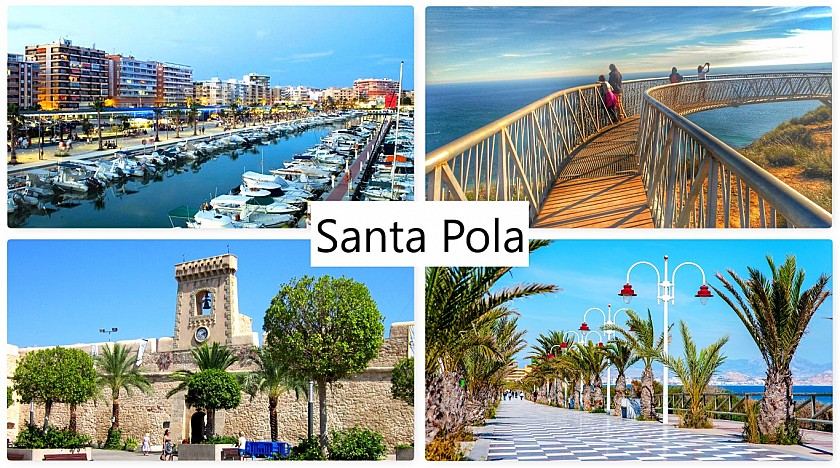
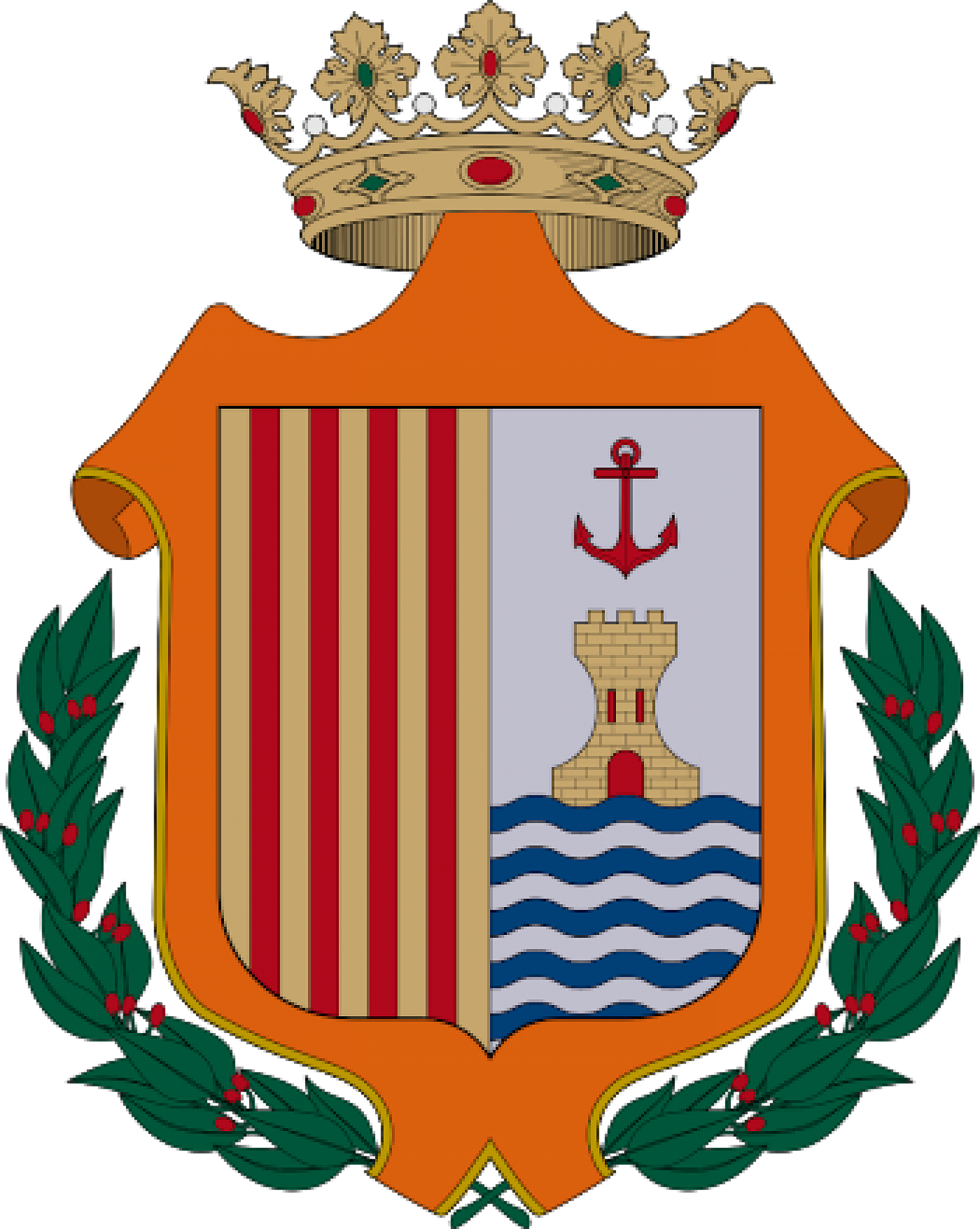
Population:
31.745 (2018)
Flag:
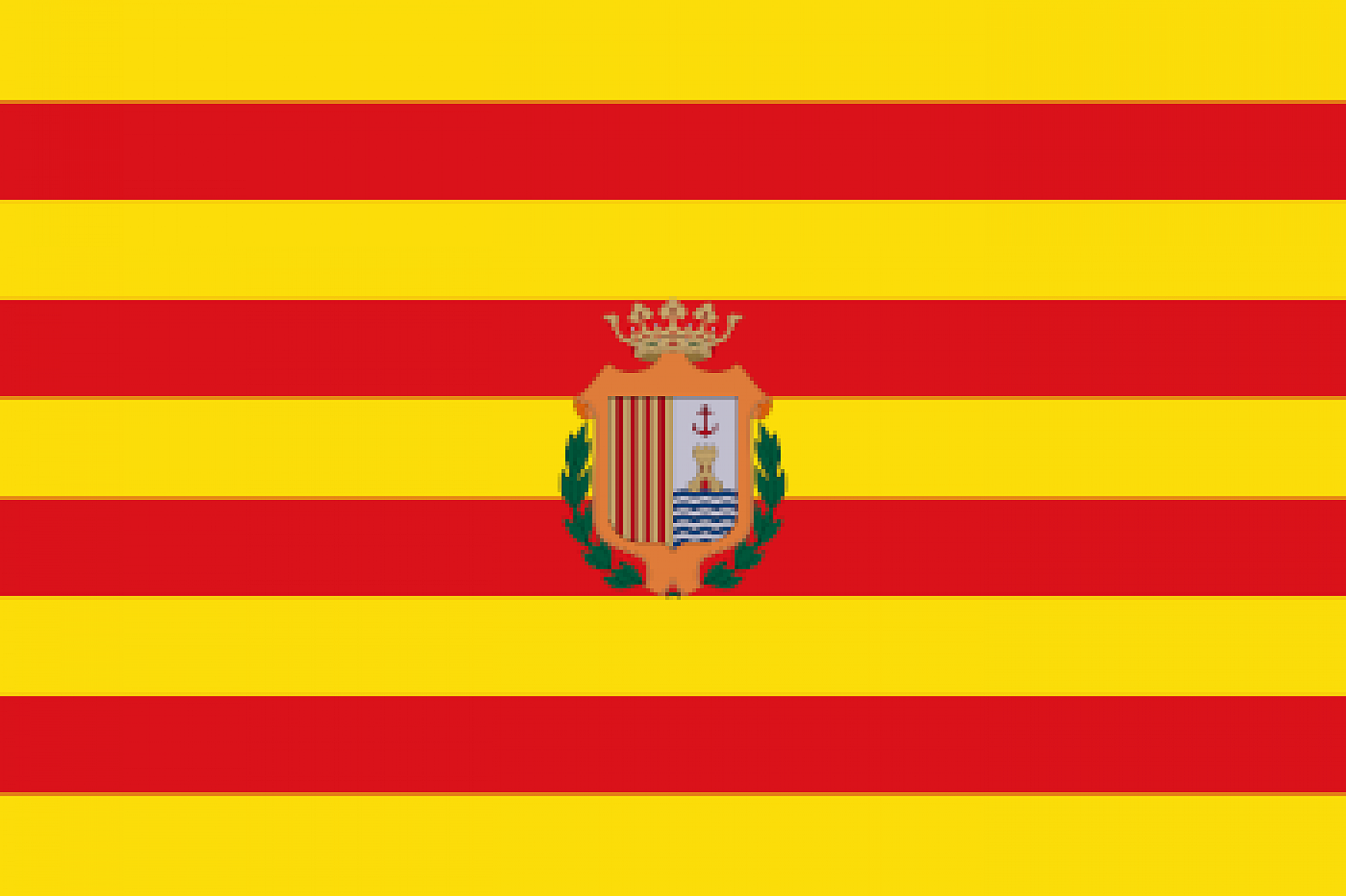
Watch:
Video Santa Pola
To Santa Pola belongs:
Location: Coast
Airport: 13 km (Alicante)
Torrevieja: 33 km
Santa Pola in a nutshell:
Santa Pola's latest slogan is: More than just the sea. There is nothing to be said about that. The town is easily accessible due to its short distance from Alicante International Airport. It is a tourist town, a still active fishing village and a location with an above average amount of natural beauty within the city limits. In addition, here on the Mediterranean coast one can still discern countless traces of a long, rich history. Even in the heart of Santa Pola, the visitor, while sipping a drink on the terrace surrounding the Palm Tree Park, can take a bewildered look at the ruins of an ancient Roman house.
In stark contrast to the mother community with its castle, watchtowers, an Iberian site from four centuries BC and many other locations that can tell a long story, the urbanization Gran Alacant has been developed a few kilometers away. A third of the total population of Santa Pola now lives in this popular enclave where many foreigners have their (second) homes. What old and new have in common in Santa Pola is a diverse range of beaches, bays and nature. With regard to the latter, the Las Salinas nature park is a beautiful nature reserve with which Santa Pola likes to advertise itself. This is an intriguing area where industrial salt production meets an enormous wealth of bird life. Yes, Santa Pola is certainly 'more than just the sea'.
The first evidences of life in Santa Pola go all the way back to the Stone Age. Primitive tools and rock paintings have been found in two caves in the immediate vicinity, which indicate this. The first signs of a real settlement date from around the 4th century BC. A small walled community on the Vinalopo River was a kind of trading center where the seafaring nations the Greeks and the Phoenicians came to trade goods.
With the arrival of the Romans, everything suddenly became bigger. In the first century they built the Portus Illicitus (literally: the port of Elche). Thus, the current Santa Pola became a very important port for the entire Mediterranean. In fact, maritime trade was so extensive that it rivaled the renowned Roman fortress of Cartagena. The Portus Illicitus grew into a complete city from the first to the fifth century. Archaeological finds illustrate how vibrant the trade must have been with the presence of warehouses, a necropolis and a fish brine factory.
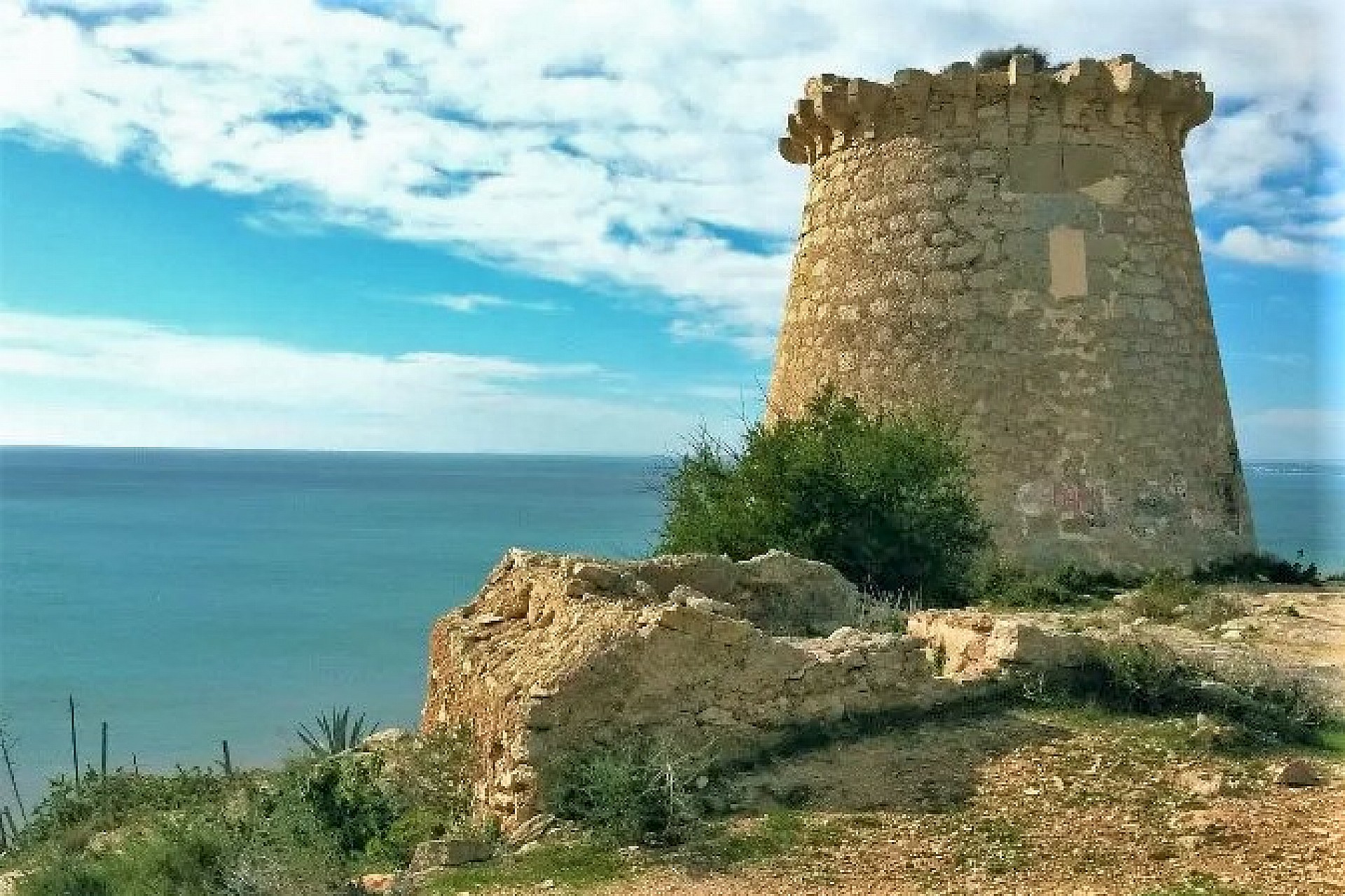
Tangible evidence of those glory years can still be seen in the Palm Tree Park in the city. There you can see the ruins of a large Roman villa from the 4th century. Both the size of the house and the beautiful mosaics give a good idea of how much wealth was amassed in that time.
A long period of decline and depopulation followed the departure of the Romans. Only in the 16th century, with the construction of the castle annex fort and a number of watchtowers, confidence slowly returned that it was good and safe to settle in Santa Pola. The castle and towers protected the people from pirate attacks. The current town is in fact mainly built on the remains of the Portus Illicitus.
Santa Pola is blessed with a great diversity of beaches. From the more than 11 kilometers of beaches in the city, it is not difficult to choose the type of beach that best suits individual preferences. There are bays with fine sand and crystal clear water in the east, family beaches with shallow water and few waves in the west. For nature lovers, there are the pristine zones and secluded coves of the cape. Here is a selection from the selection of beaches:
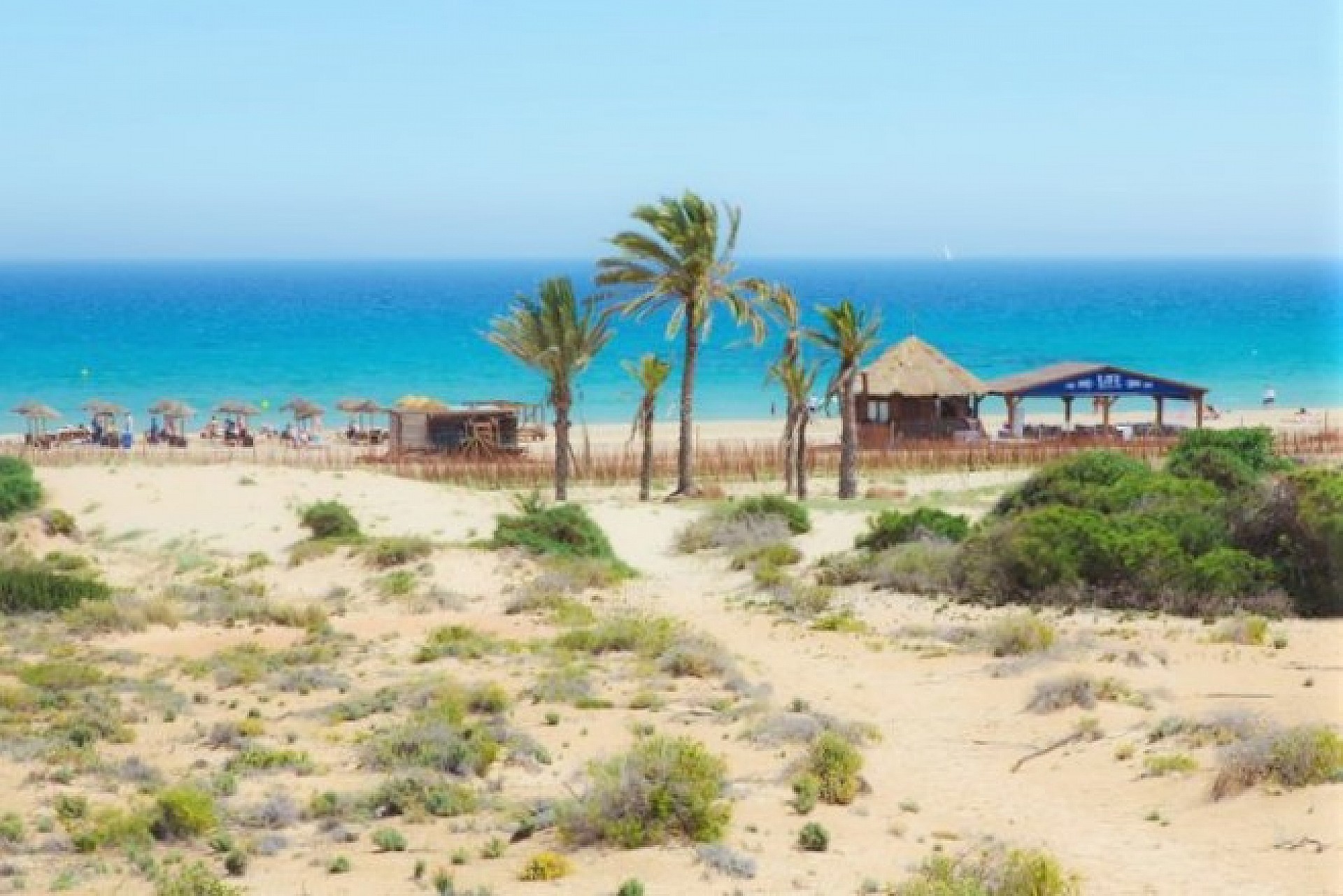
The fortified castle of Santa Pola is the heart of the city's cultural life. The castle was built in 1558 in a military Renaissance style and mainly served as protection against the attacks of corsairs and pirates that ravaged the coast in the 16th and 17th centuries. Today, the striking building serves as a cultural center where many festive and religious activities are organized. The extensive complex houses the Maritime Museum, the Fisheries Museum, the fortress of the Duke of Arcos, the Chapel of the Virgin Loreto and a municipal exhibition hall.
The large parade ground has been the site of political and military life for centuries. Nowadays it is a popular meeting place during the annual folk festivals, for a tribute to the Virgin Loreto or for a wander around the medieval market around Easter.
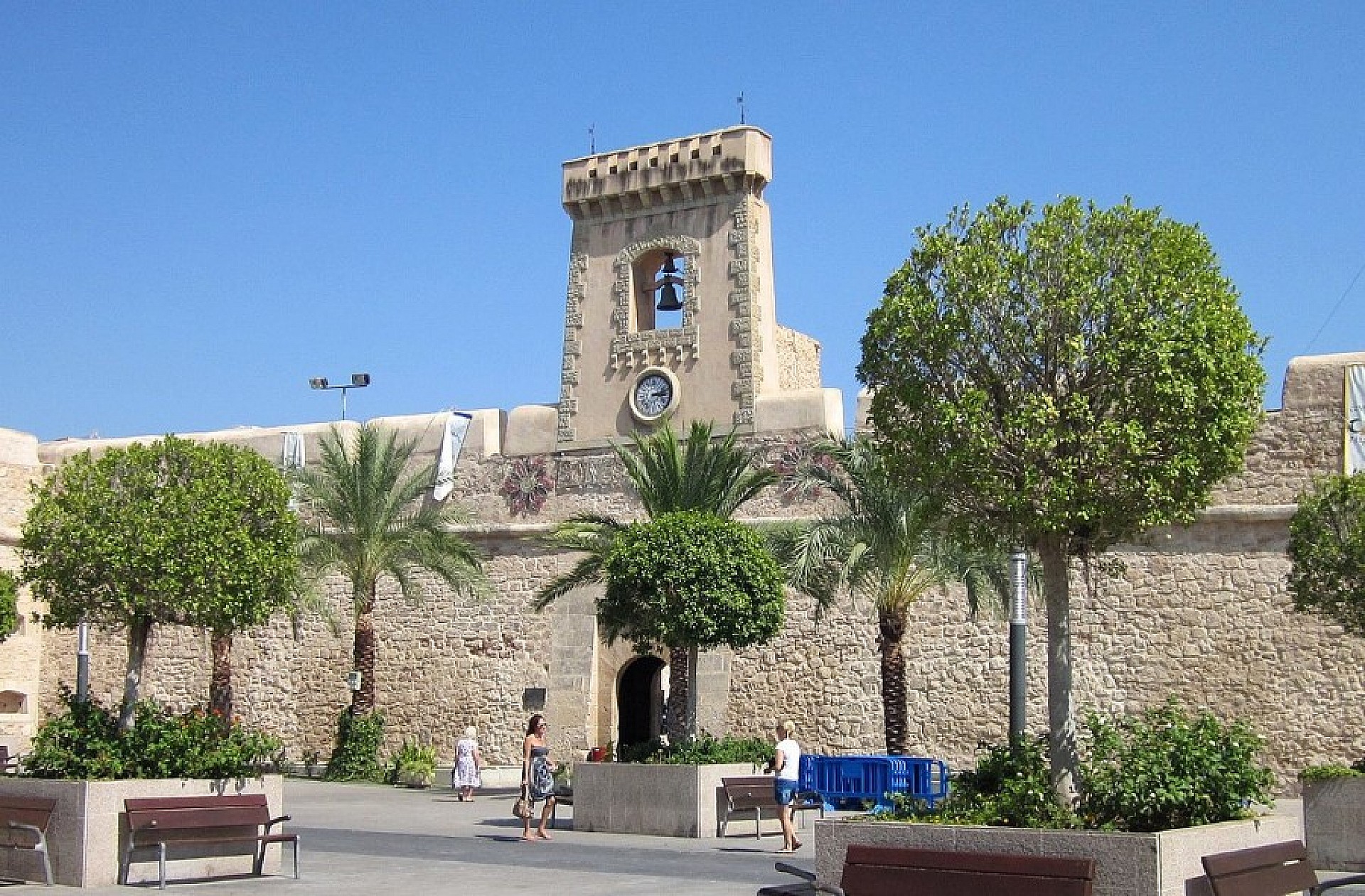
Inside, the fortress of the Duke Arcos is a popular place to meet. Thanks to a series of modern technological gadgets, this room has excellent acoustics. Many concerts take place here, as well as receptions, conferences and civil weddings. In the municipal exhibition hall, all kinds of exhibitions of painting, photography or other art expressions take place.
The Maritime Museum tells the history of Santa Pola and the sea in three main themes: Prehistory, the Phoenicians and the Roman harbor. The Fisheries Museum tries to highlight all aspects of traditional fishing life. Here the visitor can learn more about ship carpentry, fishing, nautical instruments and traditional craft.
While many of Santa Pola's annual fiestas bear strong resemblances to similar festivities in other towns and cities along the coast, the town also allows for some notable variations. That already starts in the second weekend in March with the Mig Any party. This is a celebration of the Moors and Christians in a toned down and simpler form. The residents also pass through the streets dressed up and are accompanied by street orchestras. But everything is just a bit less structured and exuberant than the real party. It seems as if it is a kind of loose rehearsal for the real party that is being celebrated at the beginning of September.
In that festival week in September, Santa Pola also deviates from the usual formula for Moors and Christians celebrations. During the first days, the tradition is followed, as it also applies in other congregations. This means that the Moors 'conquest and the Christians' reconquest are reenacted and visitors can expect a parade with many street orchestras and 'warring factions' decked out in the most colorful medieval creations. But in the second half of that festive week, the focus shifts to festivities around Santa Pola's patron saint the Virgin Loreto. This patroness occupies a very important place in the lives of the residents. This central role probably has to do with the curious way in which a statue of Loreto ended up in Santa Pola in the 17th century. You can read more about this in Santa Pola honors the virgin Loreto.
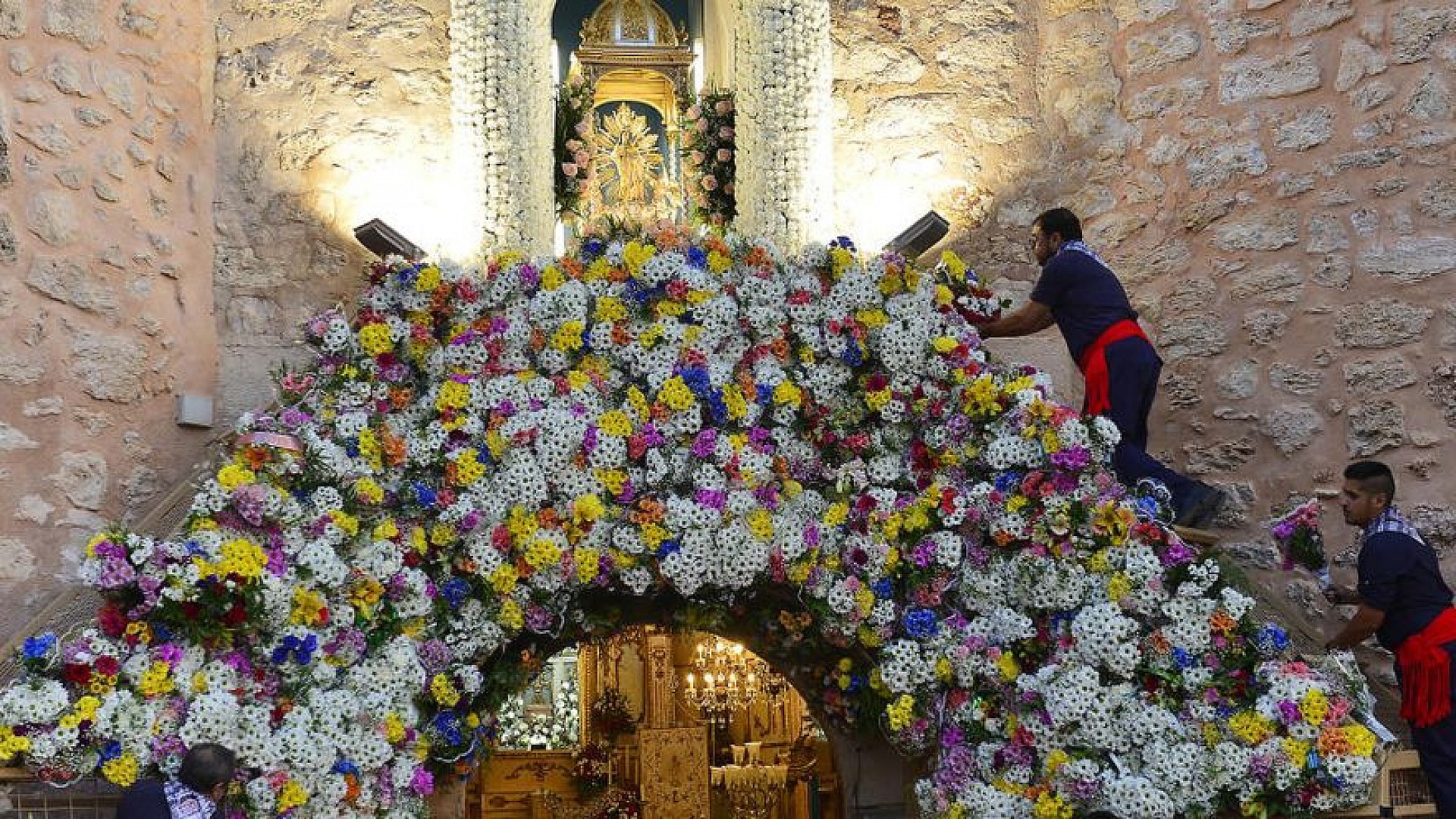
The fact is that the Virgo captures the imagination enormously. This is reflected in the days-long parties with processions, floats, fireworks and a range of sports activities and games for children. The most important moment is the procession through the town to the castle where lavish flower offerings are made to Loreto. The tour ends at the chapel that is housed in the castle in her memory.
On December 10, the patroness will once again be in the spotlight. After a church service, the procession of residents moves to the fishing port where another flower tribute is paid at the place where her statue came ashore.
Easter week brings more processions, which are organized by the various guilds in the city. During Easter week, there is also a medieval market in the castle's parade ground.
In June there is a pilgrimage during which the image of the Virgin Rosario is carried on a walk from the Assumption church to the cape. This tour is nearly eight kilometers long and mostly follows the coastline. Some participants make this trip by bicycle or on horseback.
The feast for the Virgin Carmen is on the calendar almost everywhere along the coast. The patroness of the sailors is also honored here on July 16 with a floral tribute by the sea.
Three quarters of Santa Pola's territory consists of nature and has a protected status. That means that there is plenty to enjoy for nature lovers. Most notable are Las Salinas, the salt lakes that line either side of the N-332 coastal road. This park covers an area of 2,470 hectares. This protected wetland has been awarded the designation of 'Special Importance for Birds' and is known for the continued presence of flamingos, storks and other bird species. In Las Salinas, water is carried through a network of basins. The salt can then be recovered by evaporation. This is ideal for birds that can feast on fish and invertebrates. An old salt mill in the area of Las Salinas houses a salt museum. There you can learn exactly how the salt extraction process works. There is also a bird observation site. A guided tour of the park can also be booked in the museum.
The mountains of the cape have formed a series of, sometimes high, cliffs. The cape is an offshoot of the mountains and marks the boundary of the bay of Alicante. The area is considered a natural environment of great value, as it is one of the few fossil reefs on the Mediterranean coast. Moreover, it is rich in a varied flora and fauna.
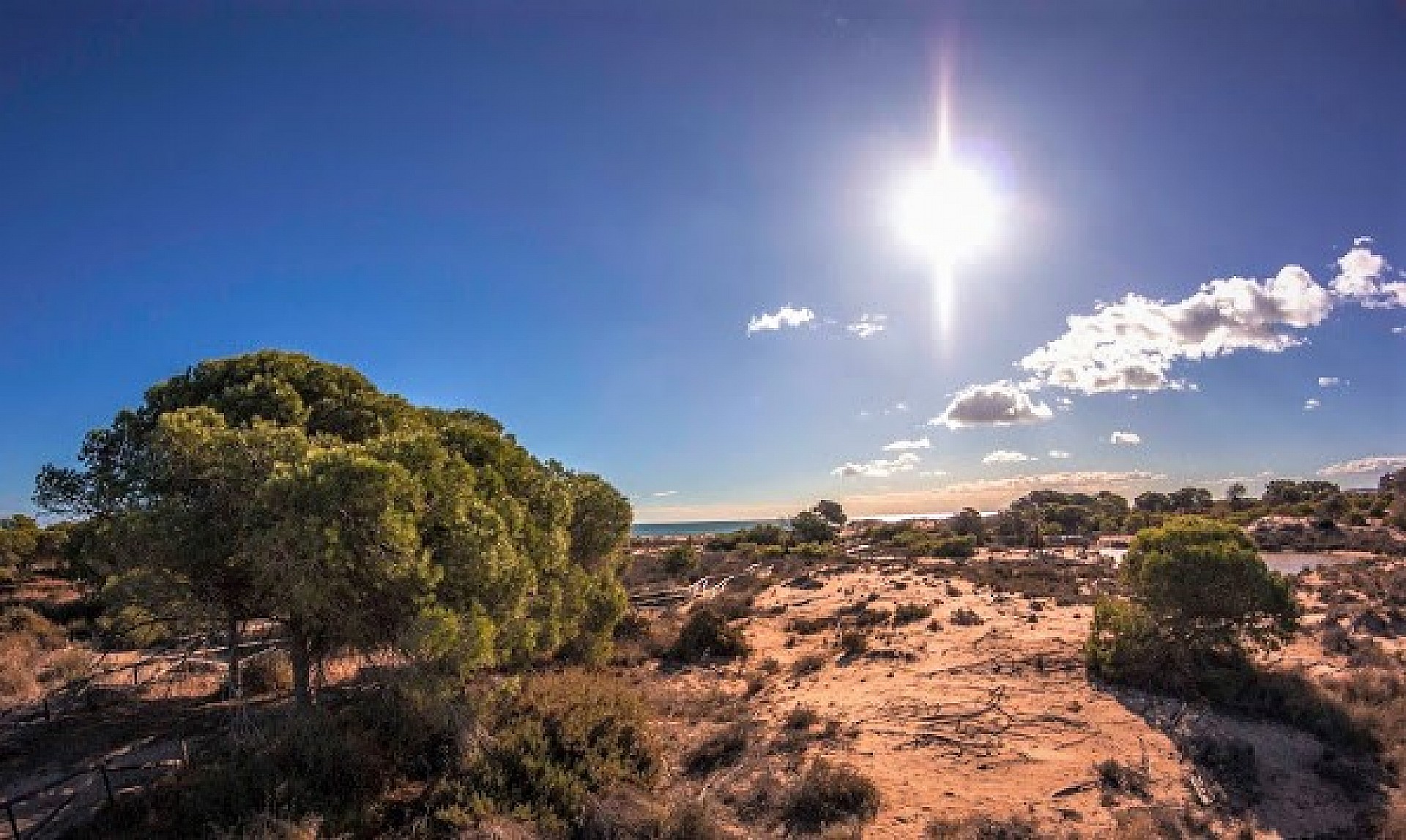
As Santa Pola is blessed with an abundance of nature, a great deal of care has been taken to carefully map out a range of routes for walkers, cyclists and mountain bikers. The tourist breau has information available on nine of those routes. These vary from routes of just a few kilometers to a route around the municipality of no less than 52 kilometers. There is a choice of routes that highlight specific aspects of Santa Pola such as beach, salt lakes, cape and mountains, or a mixture thereof. Along the way there is plenty to enjoy, for example, the fishing harbor, the bays, the castle, the lighthouse, a water reservoir, anti-aircraft guns, the Meleja nature reserve, bunkers and much more.
If you want to experience nature in a completely different way, you can try one of the snorkeling routes. Due to the presence of so many bays, there are countless places in the water to enjoy interesting underwater flora and fauna.
Santa Pola has a range of other activities in store for the enterprising visitors. Take a look at the Esteban Gonzalez museum boat on the Plaza Constitucion. There you can take a look behind the scenes of life on a real fishing boat. Or visit the fish auction in one of the most important fishing ports on the Spanish Mediterranean. Enjoy the hectic scenes that take place there every day. The covered market hall is another place where it is sometimes pleasantly busy.
Or enjoy the much quieter environment of the aquarium at the Plaza Francisco Fernandez Ordonez. There are nine large aquariums, all of which in a different way mimic the flora and fauna of the waters of the Med on a modest scale. It will also be quiet at beautiful viewing spots that are scattered throughout the municipality. Near the lighthouse is the Atalayola watchtower with views to the coast of Alicante, the Cabo de las Huertas and the island of Grossa off the coast of the Mar Menor. The Torre del Pep on the avenida of the same name gives a good view of the island of Tabarca. Also in the Gran Alacant district are two strategically located viewing points, which provide a panoramic view of the urbanization and the surrounding landscape.
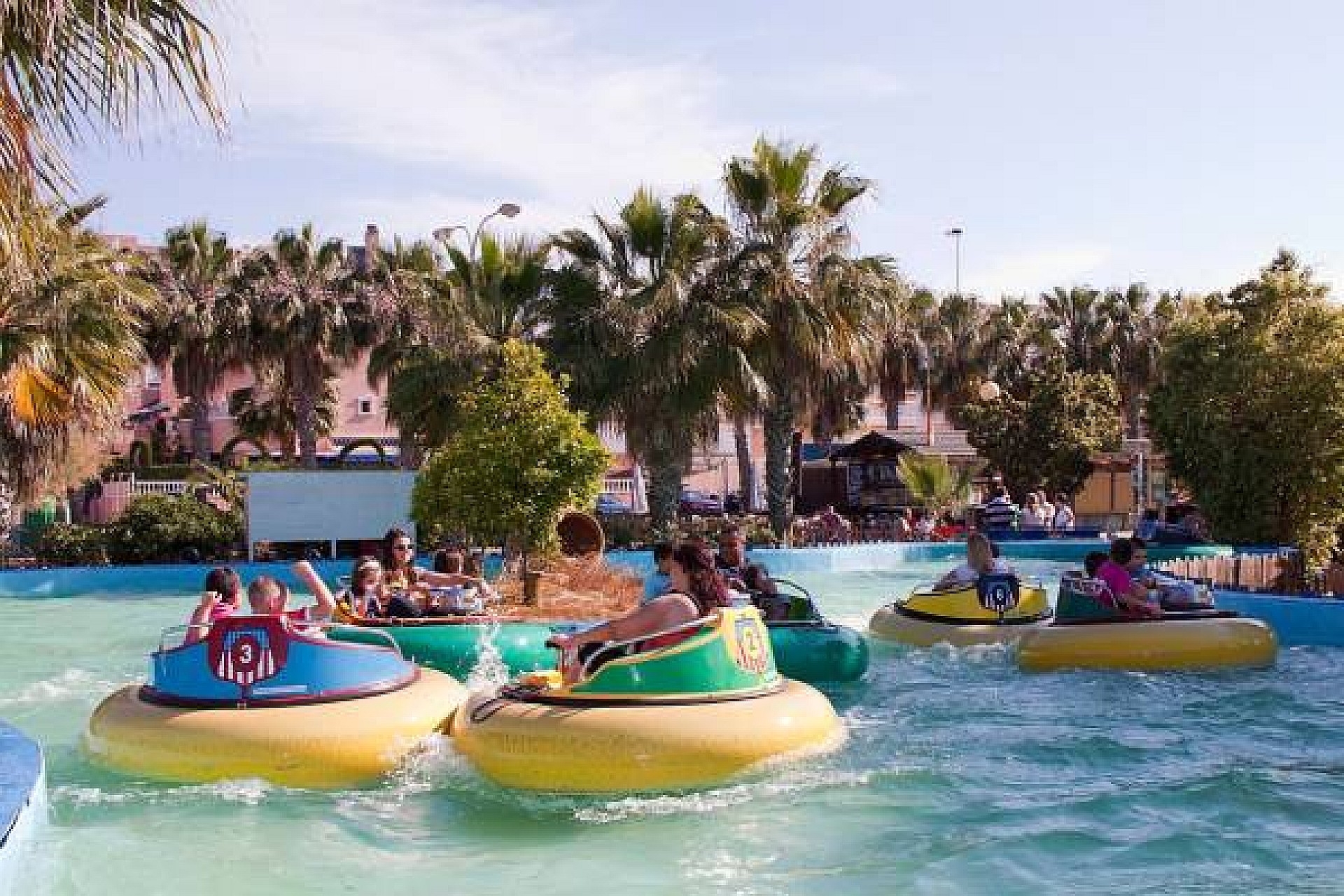
Naturally, water sports play an important role in Santa Pola. A modern yacht club and a protected bay are a good combination for practicing sports activities such as windsurfing, kite surfing, sailing, swimming, snorkeling and diving. On the mainland, the city has been organizing the half marathon in January since 1990. This event has grown in popularity over the years and today attracts around 9,000 riders.
Pola Park is the amusement park located along the N-332 coastal road. The somewhat older theme park has a wide range of activities for especially younger and somewhat older children. It is open from the beginning of the evening and has water rides, a roller coaster, a quad bike track, trampolines, a bouncy castle, go karts and a range of other fun activities.
The Gran Alacant urbanization is a collection of different residential areas just north of Santa Pola. From an administrative point of view, urbanization falls under that of the city. It has expanded considerably over the course of a few decades. Now it has a population of approximately 10,000 residents of a range of different nationalities. Thanks to the expansion with a large number of facilities, it is now unnecessary to keep going to the city. Its location only eight kilometers from Alicante airport is an important reason for the explosive growth in construction activities.
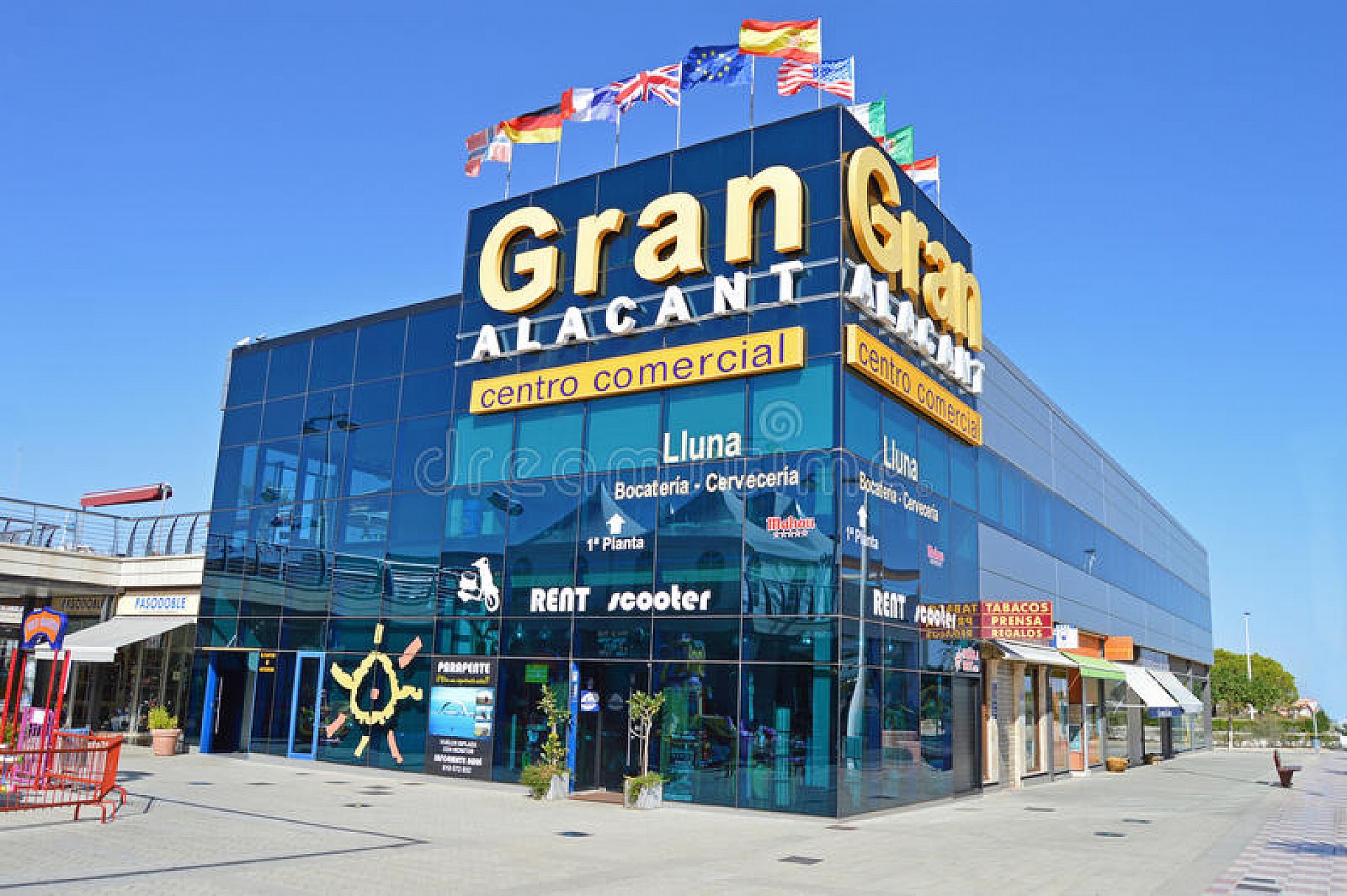
The main shopping center is located directly at the entrance of the urbanization when coming from the N-332 towards the airport. Gran Alicant has a weekly market on Thursdays, a second hand market on every third Sunday of the month and an organic food market on different days during the summer months. Scattered across the urbanization are a few smaller shopping centers.
The district has a sports center where various ball sports can be practiced and there are clubs for darts and bowls. An important moment in the sporting field is the jaalijkse ten kilometer run for both professionals and amateurs. But of course the most interest is in the beach life. The Playa el Carabassi is a beautiful sandy beach that is surrounded by a dune area with many bushes and trees. Summer guests can also visit the beach of Arenales del Sol, which is directly adjacent to Gran Alacant. Nature lovers can enjoy the flora and fauna in the Clot de Calvany conservation area. This is located along the N-332 towards the airport. It is a beautiful walking area with salt marshes, natural ponds, dunes, pine trees and sand pits.